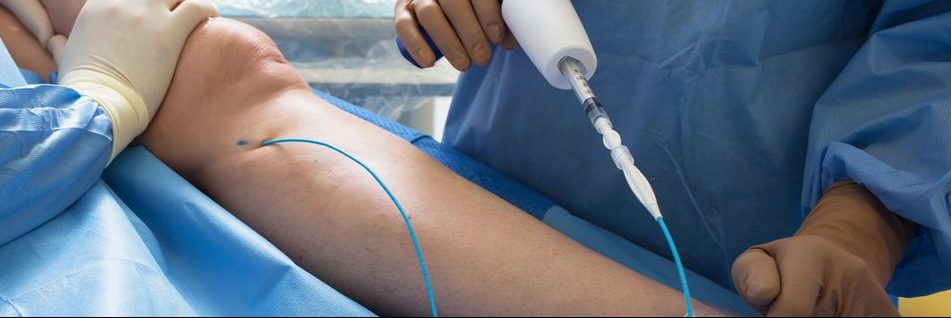Varicose veins are twisted, painful, bluish veins on the legs, hands, and groin area that bulge beneath the surface of the skin. When blood vessels aren’t strong enough to push blood up and outward through the body, the blood falls back down into the vein and pools there, which causes the veins to swell. At best, varicose veins are an uncomfortable cosmetic issue. At worst, they are symptomatic of more serious health complications like venous insufficiency or deep vein thrombosis (DVT).
Varicose vein sufferers know they need to have their veins treated as soon as possible, but they often don’t know what the best vein removal treatment is. What’s more, it can be difficult to find trustworthy information. Here’s everything you need to know about the best way to treat varicose veins.
A Brief History of Varicose Vein Treatments
Medical professionals began using vein stripping to treat varicose veins as early as 1905, but the surgical treatment didn’t reach widespread use until the 1960s. During this procedure, the doctor made small incisions along the groin or thigh, inserted a small wire into the greater saphenous vein, and pulled the affected vein from the body.
This vein treatment has largely fallen out of practice because it can be very painful and have many negative side effects like scarring, infection at the incision site, and heavy bleeding. In the worst cases, varicose veins reopened soon after stripping or ultimately became worse.
Phlebectomy, still in use in some offices today, is a procedure similar to vein stripping that removes visible veins. This makes it more effective for treating the cosmetic side effects of varicose veins. Unfortunately, since phlebectomy only treats the visible veins, the procedure sometimes misses the invisible branch and varicose veins that cause deeper issues. Phlebectomy can cause bleeding, infection, hematoma, and even nerve damage.
Research has found that painful vein treatments like vein stripping and phlebectomy aren’t always completely effective. According to a 2012 study in the North American Journal of Medical Sciences, 60% of patients see a recurrence of varicose veins within five years of the procedure.
When thermal ablation first became available, many vein specialists thought it would revolutionize vein removal treatment for years to come. This procedure uses a laser or high-frequency radio waves to inject heat into the affected vein. The heat closes up the damaged vein but leaves it in place so it can be reabsorbed into the body — no painful stripping required, and no bleeding.
Still, thermal ablation isn’t perfect. In addition to the possibility of bruising and nerve damage, the extreme heat from thermal ablation can cause burns and skin discoloration around the treated vein. A 2014 study in the Scientific World Journal found that varicose veins recurred after thermal ablation within three years of the procedure. Thermal ablation surpasses vein stripping and phlebectomy in terms of safety and painlessness, but it’s still not the best vein removal treatment available.
Foam Sclerotherapy Offers a New Solution
Thermal ablation is most effective when combined with ultrasound guided foam sclerotherapy (UGFS), the best procedure for fast, non-surgical, and minimally-invasive vein removal. UGFS stands out from other vein treatments because it’s the only one that attacks all kinds of damaged veins — visible, invisible, branch, and varicose veins.
During this procedure, the doctor first uses an ultrasound wand to locate the affected vein and determine where exactly the needle will be placed. Then, they will inject the damaged vein with sclerosant foam to close it and restore healthy blood flow. Patients can walk immediately after the procedures, resume normal activities in a few days, and should fully see results in about two weeks. In addition to improving the appearance of the legs, UGFS also effectively relieves painful symptoms of varicose veins and vein disease.
Get Expert Advice
When it comes to vein removal treatments for painful varicose veins, there’s no competition — ultrasound-guided foam sclerotherapy offers patients lasting relief. If you’re interested in learning more about UGFS and want a professional opinion, contact the vein experts at Vein911® Vein Treatment Centers. Our team of specialists will answer any questions you have about the procedure and help you feel great again!

